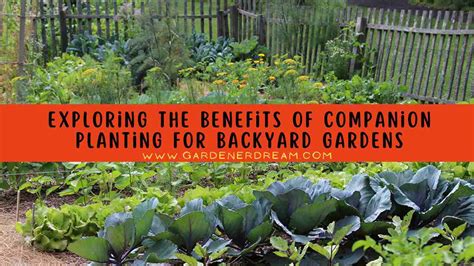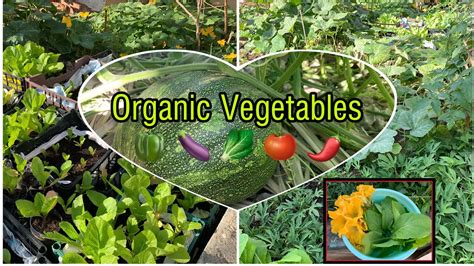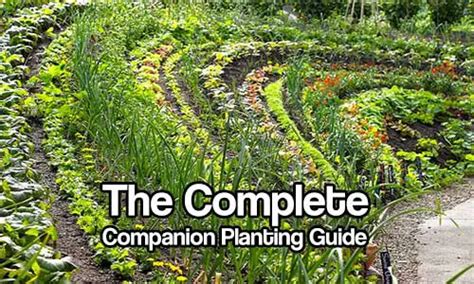Companion planting is an age-old gardening technique that involves growing different plants together to enhance growth, repel pests, and improve soil health. This method taps into the natural relationships between plants, allowing them to support each other in various ways. Whether you’re a seasoned gardener or a beginner, understanding the principles of companion planting can lead to a more productive and healthier garden. In this guide, we’ll explore the many benefits of companion planting, popular plant pairings, and how this approach can help you maximize space and create a thriving garden ecosystem. By following these tips, you can cultivate a garden that’s both beautiful and bountiful.
Explore this topic thoroughly with shzow.com
1. Introduction to Companion Planting
Companion planting, a gardening practice steeped in nature’s wisdom, involves growing specific plants together to promote their mutual growth and vitality. This technique goes beyond simply placing plants side by side, instead requiring a thoughtful arrangement based on their natural interactions and symbiotic benefits. By understanding which plants thrive in each other’s company, gardeners can create a harmonious garden ecosystem that fosters healthy growth, repels pests, and maximizes space utilization.
Historically, companion planting has been used in various cultures to improve crop yields and protect plants from diseases and pests. The concept leverages the natural chemical, physical, and biological interactions between plants, allowing them to work in synergy. For example, some plants release natural substances that repel harmful insects, while others attract beneficial pollinators or enhance soil nutrients.
Incorporating companion planting into your garden planning can lead to more resilient plants and better harvests. Whether you’re planting vegetables, herbs, or flowers, the right combinations can significantly impact the overall health of your garden. As you delve into the specifics of companion planting, you’ll discover how these relationships can transform your gardening experience, making it more sustainable and rewarding. This guide will introduce you to the essentials of companion planting, helping you start or refine your gardening journey.

2. Benefits of Companion Planting
Companion planting can dramatically improve your garden’s health and yield. One of the most notable benefits is natural pest control. By carefully pairing plants, you can minimize the need for chemical pesticides. Certain plants, like marigolds and basil, naturally repel harmful insects, while others, such as nasturtiums, draw pests away from more sensitive crops. This creates a harmonious ecosystem where plants protect each other from typical garden threats.
Another key benefit is enhanced plant growth and yield. Certain plants release chemicals or nutrients into the soil that encourage the development of nearby plants. For instance, legumes like beans and peas fix nitrogen in the soil, enriching the growth of neighboring species such as tomatoes or lettuce. Furthermore, taller plants can provide shade for sun-sensitive species, allowing them to flourish in hot climates.
Companion planting promotes healthy soil by fostering a diverse array of plants in the garden. This diversity minimizes soil depletion, as different plants have unique nutrient needs and contribute different forms of organic matter to the soil. Additionally, companion planting optimizes garden space, enabling you to cultivate more in limited areas by effectively utilizing both vertical and horizontal dimensions.
In summary, companion planting offers a multitude of advantages, culminating in a healthier, more sustainable, and ultimately, a more productive garden.

3. Common Companion Planting Combinations
Understanding common companion planting combinations is key to creating a thriving garden. One classic pairing is tomatoes and basil. Basil not only enhances the flavor of tomatoes but also repels pests like aphids and whiteflies. Another popular combination is carrots and onions. Onions release a scent that deters carrot flies, while carrots help to break up soil, making it easier for onions to grow.
Marigolds are often planted with a variety of vegetables, such as beans, cucumbers, and tomatoes, due to their ability to repel nematodes and other harmful insects. Similarly, planting corn, beans, and squash together—often referred to as the “Three Sisters”—is a time-tested method. Corn provides a natural trellis for beans, beans fix nitrogen in the soil to nourish corn and squash, and squash spreads along the ground, suppressing weeds and retaining moisture.
These combinations are just a few examples of how companion planting can create beneficial relationships in your garden. By selecting the right plant pairings, you can enhance growth, protect against pests, and make the most of your garden space, ensuring a bountiful harvest.

4. Companion Planting for Pest Control
Companion planting is a natural, effective way to manage pests in your garden. Planting certain species together helps deter harmful insects and reduces the need for chemical pesticides. For example, marigolds are renowned for their ability to repel nematodes, aphids, and other pests, making them ideal companions for many vegetables, including tomatoes and beans.
Similarly, planting garlic near roses can help ward off aphids. Mint and sage, when planted near cabbage, broccoli, or kale, can deter cabbage moths. Nasturtiums, often used as a trap crop, attract aphids and other pests away from more vulnerable plants like tomatoes and peppers, thus protecting them.
These natural defenses not only reduce pest populations, but also contribute to a healthier garden ecosystem. By strategically choosing plants that repel pests, you can cultivate a more resilient garden, lessening the reliance on artificial pest control methods and fostering a balanced environment.
5. Enhancing Soil Health with Companion Planting
Companion planting is a valuable practice for improving soil health and fostering a sustainable, productive garden. Plants have diverse nutrient requirements and offer varying contributions to the soil ecosystem, creating a balanced and fertile environment. Legumes, such as beans and peas, exemplify this principle by fixing nitrogen in the soil through a symbiotic relationship with nitrogen-fixing bacteria. This natural process enriches the soil, benefiting nearby nitrogen-demanding plants like leafy greens and tomatoes.
Furthermore, deep-rooted plants, such as carrots or radishes, contribute to soil health by breaking up compacted soil. This improved aeration and water penetration benefit neighboring plants. Concurrently, cover crops like clover or alfalfa serve multiple purposes. They prevent soil erosion, suppress weed growth, and enrich the soil with organic matter when they decompose.
Strategic pairing of plants with complementary soil needs can minimize reliance on synthetic fertilizers, fostering a healthier and more self-sufficient garden ecosystem. This approach not only promotes vigorous plant growth but also contributes to long-term soil fertility and stability.
6. Companion Planting for Maximizing Space
Companion planting is a brilliant way to optimize space in your garden, enabling you to cultivate a greater variety of plants within a limited area. By strategically pairing plants with contrasting growth habits, you can effectively utilize both vertical and horizontal space. For example, planting towering, sun-loving crops like corn alongside low-lying, shade-tolerant plants such as lettuce allows for efficient use of the same ground. The corn provides shade for the lettuce, which flourishes in cooler environments.
Another example is the combination of climbing plants, like beans, with sprawling plants, like squash. The beans can grow upward on a trellis or corn stalks, while the squash spreads out on the ground, covering bare soil and preventing weeds. This approach not only conserves space but also reduces competition for resources such as sunlight and nutrients.
Additionally, intercropping fast-growing plants like radishes with slower-growing ones like carrots ensures that the radishes can be harvested early, freeing up space for the carrots to mature. This strategic use of space through companion planting can lead to a more efficient and productive garden, even in small plots.
7. Tips for Successful Companion Planting
Here are some tips to ensure successful companion planting in your garden:
Know Your Plants: Before pairing plants together, it’s essential to research the specific needs and benefits of each species. Understanding the ways in which plants interact—such as repelling pests, attracting beneficial insects, or improving soil nutrients—is crucial for successful companion planting.
Plan Your Garden Layout Wisely:
To optimize your garden’s space and light, thoughtfully design your layout. Combine tall plants with shorter ones to create visual interest and efficient use of vertical space. Utilize trellises for climbing plants, further maximizing the space available. Group plants with similar needs together to ensure they have access to adequate resources and to prevent competition.
Rotate Crops: Implementing crop rotation helps to prevent soil depletion and reduce pest buildup. By avoiding the planting of the same plant family in the same location year after year, the risk of soil-borne diseases is minimized.
Keep an Eye on Your Plants
Regularly inspect your plants for any signs of pests or disease. While companion planting can help deter problems, consistent monitoring is crucial. If you notice any issues with plant health, adjust your plant pairings as needed.
Incorporate Cover Crops: To enhance soil health and combat erosion, consider planting cover crops like clover or rye. These plants can be rotated with your primary crops, enriching the soil with organic matter and essential nutrients.
Start Small: Begin by experimenting with a few companion planting combinations. As your experience grows, you can gradually expand your efforts. This incremental approach allows you to learn and refine your strategies without feeling overwhelmed.
These tips will help you maximize the benefits of companion planting, leading to a healthier and more productive garden.
Companion planting offers a range of benefits, from enhanced pest control to improved soil health and space utilization. By carefully selecting and pairing plants, you can create a more resilient and productive garden. Whether you’re aiming to boost growth, reduce pests, or maximize space, the principles of companion planting provide valuable strategies for achieving a thriving garden. Embrace these techniques to enjoy a bountiful and sustainable gardening experience.
shzow.com
